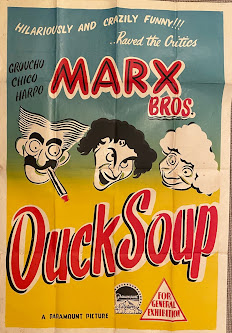By Andrew Korfhage, cross-posted from Other Words
During a key scene in the classic holiday film It's A Wonderful Life,
savings-and-loan proprietor George Bailey, played by Jimmy Stewart,
memorably explains to the townspeople how his business works – that he's
not sitting on piles of money just because he runs a small, local bank.
"Your money's not here," George tells the crowd. "It's in the Kennedy
house and the MacLaren house, and a hundred others. You all put your
savings in here and then we make loans to people to buy homes and cars
and other things."
Alas, when you save or invest in big corporate banks in the 21st
century, the bank isn't likely to explain to you, George-Bailey-style,
how your money is going to work in the world. Imagine what it would be
like if they would.
"Your money's not here," the bank might say. "It's financing
fossil-fuel energy projects that are polluting our environment, or
helping a corporation move jobs into overseas sweatshop factories. It's
in the CEO bonus, and the CFO bonus, and a hundred others."
As Occupy Wall Street and related protests grew this fall, anger at
the giant banks rightfully swelled as well, with a "Bank Transfer Day"
declared for pulling money out of the big banks and moving to smaller
local banks and credit unions. But not every news story covering this
issue took note of the financial institutions specially designed to play
a positive role in local communities.
Community development banks and credit unions — collectively called
CDFIs, for "community development financial institutions" — direct their
lending toward those who have been overlooked by conventional lenders.
Unlike the conventional banks that contributed to the 2008 global
economic crisis by lending out billions in unsound and predatory
subprime mortgages that their borrowers couldn't repay, CDFIs take pride
in their expertise with lower-income borrowers. They take the time to
get to know their clients, determining what homeowners and
small-business owners can actually afford.
With more of a community focus, CDFIs pursue reasonable, rather than
excessive, rates of return. They target projects that lift up
underserved communities, and boost local economies by financing small
businesses that perform vital local services. By contrast, the New Rules
Project reported in 2010 that the 20 biggest banks "devote only 18 of
their commercial loan portfolios to small business," despite the clear
need to spur small-business growth to jump-start our economy.
Where are the big banks directing all their money if they're not
supporting small businesses? For one thing, mega-bank CEOs as a group
have seen their pay skyrocket back to 2008 levels and higher. The Financial Times
reports that big-bank CEO pay rose 36 percent in 2010, while average
workers in private industry saw their pay rise only 2 percent.
If you'd rather see your banking and investment dollars going to
improve your own community, rather than lining the pockets of CEOs or
financing projects that don't match your values, there's an easy
solution. When you pull your money out of your mega-bank and start
banking with CDFIs, your old bank will hear your voice even louder and
clearer than if you were standing on Wall Street with a bullhorn.
And you'll be joining a growing movement. Funds invested in CDFIs
grew from $5 billion in assets to nearly $40 billion over the last
decade. You can find lists of banks and credit unions maintained by the
Community Development Bankers' Association (www.cdbanks.org) and the Federation of Community Development Credit Unions (www.cdcu.coop).
You can use these resources to find your own local "George Bailey" and
make a New Year's resolution to make your banking part of the solution,
rather than part of the problem.
Andrew Korfhage is Green America's online and special projects editor. www.greenamerica.org
Thursday, December 29, 2011
Subscribe to:
Post Comments
(
Atom
)







0 comments :
Post a Comment